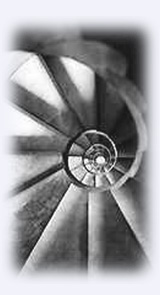 |
ViolenceIn Our World ...Against aboriginal peoples around the worldIntroductionThe histories of many nations include the attempted genocide and systemic marginalization of Aboriginal peoples. The forced removal from and theft of land in many countries, the biological warfare of intentionally disseminated disease in Canada, the head hunting in Australia and New Zealand, the brutal denial of water in the Americas, the systematic rape of Aboriginal women through the ages… the list of atrocities could go on and on. Currently, communities cope with a dearth of healthcare, housing, education, political power, countered by an abundance of substance abuse, poverty, disease, and self/other harm. The suicide rate of Inuit youth in Canada is eleven times higher the national average (Vancouver Sun, 2007). State-sanctioned violence against Aboriginal peoples has taken the form of political legislation—government actions that result in discrimination and violence. Legislation can have the power to decimate traditional social structures, introducing interpersonal, often gender-based violence. The residential schools imposed on Canada’s aboriginal communities are a plain illustration of this. Marlene Starr describes their impact:
Digital StoriesIntergenerational Effects on Professional First Nations Women Whose Mothers are Residential School Survivors The women who created these stories join those taking up the difficult task of processing painful inter-generational memories. They look at how the realities of residential schools impact relations among family members – in this case, with a focus on mothers. Digital stories combine personal narrative with music, still images, and video to share knowledge, and to open spaces for healing, resistance and the re-creation of meaning; self-determination is strengthened through self-representation. This Prairie Women's Health Centre of Excellence (PWHCE) project was funded through a financial contribution from Health Canada. Click here to see their 5 digital stories. Print InformationEnding Violence Against Aboriginal Women A report from Amnesty International on unacceptable conditions for Aboriginal women.. Graphic/Comic
The Healthy Aboriginal network offers a series of other graphic books that speak to the health of Aboriginal people on a wide range of issues. Please visit them to preview and order these beautiful, practical and insightful comics.
|
 |
| Learning & Violence Home |
| BUILDING AN UNDERSTANDING: • The problem • Violence • Impact |
| EXPLORING POSSIBILITIES: • Learning processes • Helping yourself learn • Helping others learn • Learning to teach |
| CREATING CHANGE: • Changing education • Where in the world • Taking care of self |
| IMAGINING A FUTURE: • Dreams of a different world |
| Contact: jenny@learningandviolence.net |